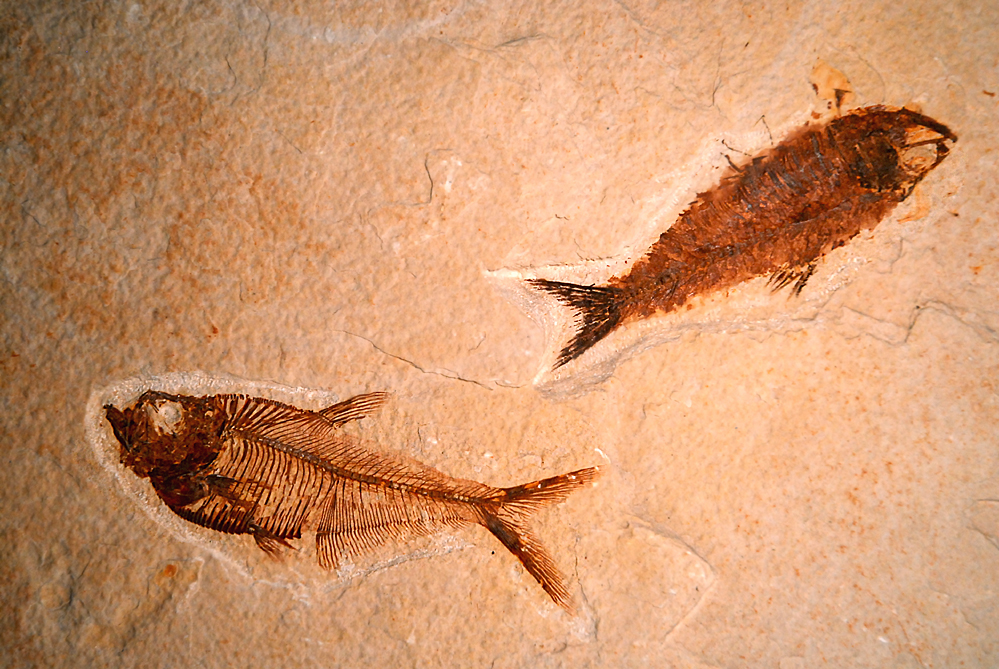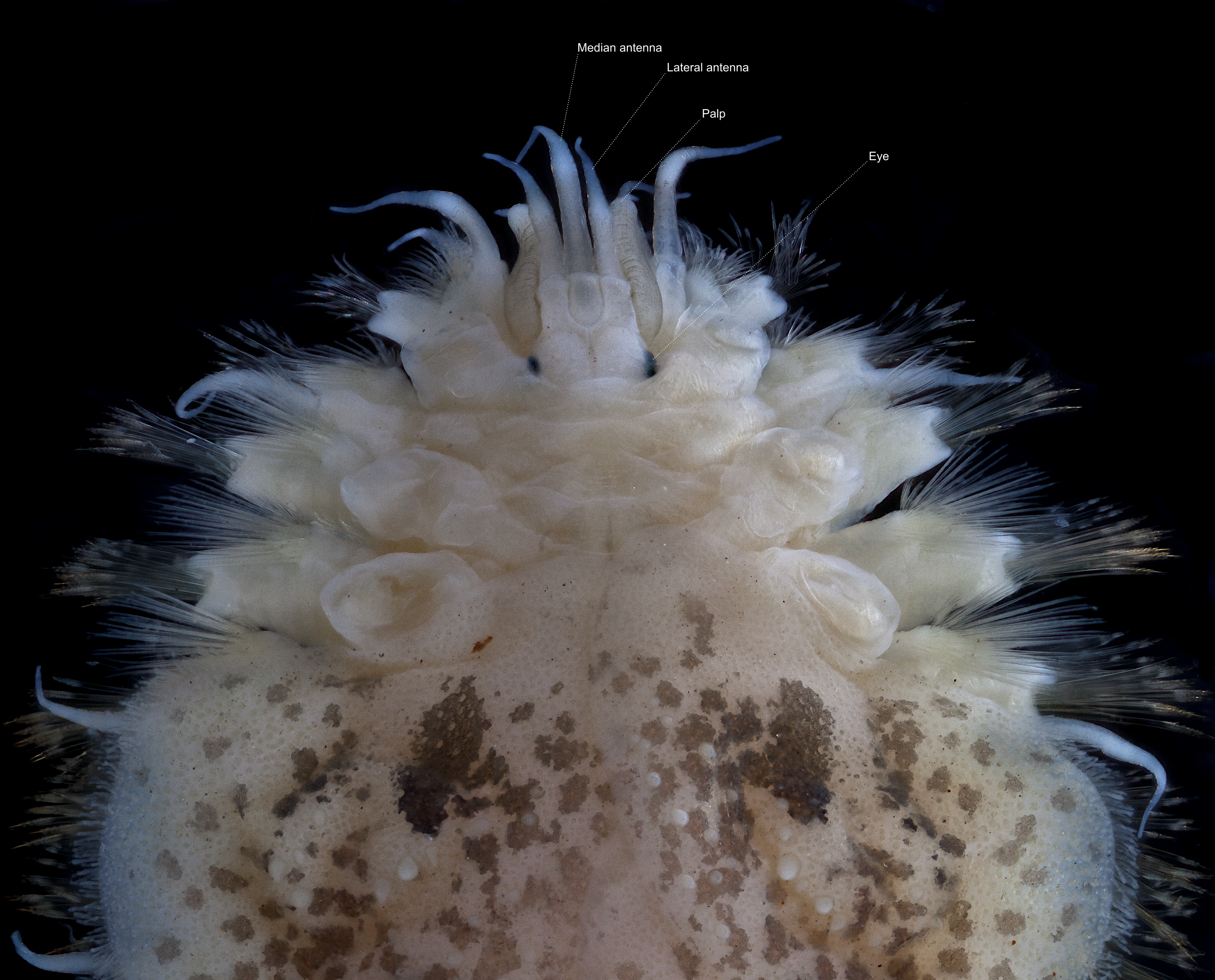|
Canadia (genus)
''Canadia'' (meaning ''of Canada'' or ''after Canada'') is a genus of extinct annelid worm present in Burgess Shale type Konservat-Lagerstätte. It is found in strata dating back to the Delamaran stage of the Middle Cambrian around 505 million years ago, during the time of the Cambrian explosion. It was about in length. Charles Doolittle Walcott named ''Canadia'' in 1911 after Canada, the country from which its remains have been found. 28 specimens of ''Canadia'' are known from the Greater Phyllopod bed, where they comprise 0.05% of the community. Description With length up to , the animal's most notable feature is the many notosetae (rigid setae extending from dorsal branches of notopodia) along the back of the animal that are characteristic of polychaete worms. A 1998 paper suggested that it may have been iridescent due to the supposed presence of diffraction gratings, however other studies have interpreted these structures as internal microvilli. Tentacles extended from ... [...More Info...] [...Related Items...] OR: [Wikipedia] [Google] [Baidu] |
Lagerstätte
A Lagerstätte (, from ''Lager'' 'storage, lair' '' Stätte'' 'place'; plural ''Lagerstätten'') is a sedimentary deposit that exhibits extraordinary fossils with exceptional preservation—sometimes including preserved soft tissues. These formations may have resulted from carcass burial in an anoxic environment with minimal bacteria, thus delaying the decomposition of both gross and fine biological features until long after a durable impression was created in the surrounding matrix. ''Lagerstätten'' span geological time from the Neoproterozoic era to the present. Worldwide, some of the best examples of near-perfect fossilization are the Cambrian Maotianshan shales and Burgess Shale, the Silurian Waukesha Biota, the Devonian Hunsrück Slates and Gogo Formation, the Carboniferous Mazon Creek, the Jurassic Posidonia Shale and Solnhofen Limestone, the Cretaceous Yixian, Santana, and Agua Nueva formations, the Eocene Green River Formation, the Miocene Foulden Maar and Ashfall F ... [...More Info...] [...Related Items...] OR: [Wikipedia] [Google] [Baidu] |
Tentacle
In zoology, a tentacle is a flexible, mobile, and elongated organ present in some species of animals, most of them invertebrates. In animal anatomy, tentacles usually occur in one or more pairs. Anatomically, the tentacles of animals work mainly like muscular hydrostats. Most forms of tentacles are used for grasping and feeding. Many are sensory organs, variously receptive to touch, vision, or to the smell or taste of particular foods or threats. Examples of such tentacles are the eyestalks of various kinds of snails. Some kinds of tentacles have both sensory and manipulatory functions. A tentacle is similar to a cirrus, but a cirrus is an organ that usually lacks the tentacle's strength, size, flexibility, or sensitivity. A nautilus has cirri, but a squid has tentacles. Invertebrates Molluscs Many molluscs have tentacles of one form or another. The most familiar are those of the pulmonate land snails, which usually have two sets of tentacles on the head: when extended ... [...More Info...] [...Related Items...] OR: [Wikipedia] [Google] [Baidu] |
Burgess Shale Animals
__NOTOC__ Burgess may refer to: People and fictional characters * Burgess (surname), a list of people and fictional characters * Burgess (given name), a list of people Places * Burgess, Michigan, an unincorporated community *Burgess, Missouri, United States * Burgess, South Carolina, United States *Burgess, Virginia, United States *Burgess Township, Bond County, Illinois, United States *Burgess Park, London, England *Burgess Field Oxford, England *Burgess Hill, Sussex, England *Mount Burgess, Canadian Rockies *Burgess Branch, a tributary of Missisquoi River, Vermont, United States Other uses *Burgess (title), a political official or representative *Burgess Company, an American airplane manufacturer *Burgess GAA, an athletic club in Ireland See also *Burgess House (other), several buildings named *Burgess model, or Concentric zone model, a theoretical model in urban geography *Burgess reagent, used in organic chemistry *Burgess Shale, a fossil-bearing formation near Mount ... [...More Info...] [...Related Items...] OR: [Wikipedia] [Google] [Baidu] |
Wiwaxia
''Wiwaxia'' is a genus of soft-bodied animals that were covered in carbonaceous scales and spines that protected it from predators. ''Wiwaxia'' fossils – mainly isolated scales, but sometimes complete, articulated fossils – are known from early Cambrian and middle Cambrian fossil deposits across the globe. The living animal would have measured up to 5 cm (2 inch) when fully grown, although a range of juvenile specimens are known, the smallest being long. ''Wiwaxia's'' affinity has been a matter of debate: Researchers were long split between two possibilities. On the one hand, its rows of scales looked superficially similar to certain scale worms (annelids); conversely, its mouthparts and general morphology suggested a relationship to the shell-less molluscs. More recently, evidence for a molluscan affinity has been accumulating, based on new details of ''Wiwaxias mouthparts, scales, and growth history. The proposed clade Halwaxiida contains ''Wiwaxia'' as well as ... [...More Info...] [...Related Items...] OR: [Wikipedia] [Google] [Baidu] |
Phyllodocida
Phyllodocida is an order of polychaete worms in the subclass Aciculata. These worms are mostly marine, though some are found in brackish water. Most are active benthic creatures, moving over the surface or burrowing in sediments, or living in cracks and crevices in bedrock. A few construct tubes in which they live and some are pelagic, swimming through the water column. There are estimated to be more than 4,600 accepted species in the order. Characteristics Phyllodocida are segmented worms and range in size from a few millimetres long to over a metre. Each segment bears a pair of paddle-like parapodia. The prostomium generally has one or two pairs of eyes, a dorsal pair of antennae, a ventral pair of sensory palps and a pair of organs on the neck. The peristomium is a ring, often hidden dorsally by the prostomium and the first segment. There is a muscular proboscis with one or more pairs of jaws. The next few segments tend to differ from those further back in having enlarged do ... [...More Info...] [...Related Items...] OR: [Wikipedia] [Google] [Baidu] |
Parapodia
In invertebrates, the term parapodium ( Gr. ''para'', beyond or beside + ''podia'', feet; plural: parapodia) refers to lateral outgrowths or protrusions from the body. Parapodia are predominantly found in annelids, where they are paired, unjointed lateral outgrowths that bear the chaetae. In several groups of sea snails and sea slugs, 'parapodium' refers to lateral fleshy protrusions. __TOC__ Annelid parapodia Most species of polychaete annelids have paired, fleshy parapodia which are segmentally arranged along the body axis. Parapodia vary greatly in size and form, reflecting a variety of functions, such as gas exchange, anchorage, protection and locomotion. General description Parapodia in polychaetes can be uniramous (consisting of one lobe or ramus) but are usually biramous (two lobes or rami). In the latter case, the dorsal lobes are called notopodia and the ventral lobes neuropodia. Both neuropodia and notopodia may possess a bundle of chaetae (neurochaetae and notochaet ... [...More Info...] [...Related Items...] OR: [Wikipedia] [Google] [Baidu] |
Ventral Nerve Cord
The ventral nerve cord is a major structure of the invertebrate central nervous system. It is the functional equivalent of the vertebrate spinal cord. The ventral nerve cord coordinates neural signaling from the brain to the body and vice versa, integrating sensory input and locomotor output. Decapitated insects can still walk, groom, and mate, illustrating that the circuitry of the ventral nerve cord is sufficient to perform complex motor programs without brain input. Structure The ventral nerve cord runs down the Anatomical terms of location, ventral ("belly", as opposed to back) plane of the organism. It contains ascending and Descending neuron, descending neurons that relay information to and from the brain, Motor neuron, motor neurons that project into the body and synapse onto muscles, Sensory neuron, sensory neurons that receive information from the body and environment, and Interneuron, interneurons that coordinate circuitry of all of these neurons. Ventral nerve cord ... [...More Info...] [...Related Items...] OR: [Wikipedia] [Google] [Baidu] |
Neuropodia
In invertebrates, the term parapodium ( Gr. ''para'', beyond or beside + ''podia'', feet; plural: parapodia) refers to lateral outgrowths or protrusions from the body. Parapodia are predominantly found in annelids, where they are paired, unjointed lateral outgrowths that bear the chaetae. In several groups of sea snails and sea slugs, 'parapodium' refers to lateral fleshy protrusions. __TOC__ Annelid parapodia Most species of polychaete annelids have paired, fleshy parapodia which are segmentally arranged along the body axis. Parapodia vary greatly in size and form, reflecting a variety of functions, such as gas exchange, anchorage, protection and locomotion. General description Parapodia in polychaetes can be uniramous (consisting of one lobe or ramus) but are usually biramous (two lobes or rami). In the latter case, the dorsal lobes are called notopodia and the ventral lobes neuropodia. Both neuropodia and notopodia may possess a bundle of chaetae (neurochaetae and notochaet ... [...More Info...] [...Related Items...] OR: [Wikipedia] [Google] [Baidu] |
Detritivore
Detritivores (also known as detrivores, detritophages, detritus feeders, or detritus eaters) are heterotrophs that obtain nutrients by consuming detritus (decomposing plant and animal parts as well as feces). There are many kinds of invertebrates, vertebrates and plants that carry out coprophagy. By doing so, all these detritivores contribute to decomposition and the nutrient cycles. They should be distinguished from other decomposers, such as many species of bacteria, fungi and protists, which are unable to ingest discrete lumps of matter, but instead live by absorbing and metabolizing on a molecular scale (saprotrophic nutrition). The terms ''detritivore'' and ''decomposer'' are often used interchangeably, but they describe different organisms. Detritivores are usually arthropods and help in the process of remineralization. Detritivores perform the first stage of remineralization, by fragmenting the dead plant matter, allowing decomposers to perform the second stage of reminerali ... [...More Info...] [...Related Items...] OR: [Wikipedia] [Google] [Baidu] |
Proboscis
A proboscis () is an elongated appendage from the head of an animal, either a vertebrate or an invertebrate. In invertebrates, the term usually refers to tubular mouthparts used for feeding and sucking. In vertebrates, a proboscis is an elongated nose or snout. Etymology First attested in English in 1609 from Latin , the latinisation of the Ancient Greek (), which comes from () 'forth, forward, before' + (), 'to feed, to nourish'. The plural as derived from the Greek is , but in English the plural form ''proboscises'' occurs frequently. Invertebrates The most common usage is to refer to the tubular feeding and sucking organ of certain invertebrates such as insects (e.g., moths, butterflies, and mosquitoes), worms (including Acanthocephala, proboscis worms) and gastropod molluscs. Acanthocephala The Acanthocephala or thorny-headed worms, or spiny-headed worms are characterized by the presence of an eversible proboscis, armed with spines, which it uses to pierce and ... [...More Info...] [...Related Items...] OR: [Wikipedia] [Google] [Baidu] |
Prostomium
The prostomium (From Ancient Greek, meaning "before the mouth"; plural: prostomia; sometimes also called the "acron") is the cephalized first body segment in an annelid worm's body at the anterior end. It is in front of (but does not include) the mouth, being usually a small shelf- or lip-like extension over the dorsal side of the mouth. The prostomium together with the peristomium, which includes the mouth and pharynx, make up the annelid head. Description The prostomium is part of the head and holds at least part of the brain and often bears sensory structures such as the eyes, antennae and palps. It may function like a kind of overlip when the animal is feeding. The prostomium bears many important taxonomic characters and its shape and composition are important for annelid systematics. In addition to the eyes, antennae and palps, the prostomium can possess appendages such as tentacles or cirri. Moreover, some polychaete prostomia have a posterior extension or ridge with ... [...More Info...] [...Related Items...] OR: [Wikipedia] [Google] [Baidu] |








_2.jpg)
